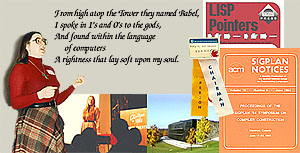
|
CURRICULUM VITAE:
It's amazing to think I've been in the computer field since 1967. What changes! When
I started programming, we lined up to use the card punch machines. And it was horribly
frustating if your only run of the day was bolixed up because some
operator had dropped your card deck, picked it up, and run it in its new random order.
Instead of counting color cars on long trips, we'd find cars with license plates that
matched computer assembly language instructions. "Hey, ZAP!" "Zero and add packed" for
those of you who never had three letter instruction codes burned into your soul.
|
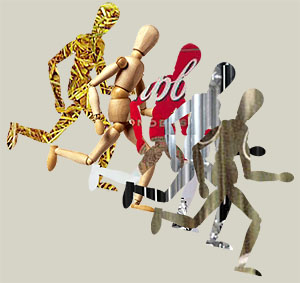
|
Ada Competition Requirements:
Intermetrics was a company deeply involved in the design of computer languages for the military and
NASA. It was a young and exciting place during my years there, and it was natural that we would
be deeply interested in the growing drive to understand what the military would need in a
common Department of Defense language. Dave Fisher was responsible for the series of requirements
documents that culminated in the hardening versions,
Strawman through Steelman, that were the basis for the DoD language competitions.
|

|
RED LANGUAGE:
I can only think myself lucky to have been on the Intermetrics team competing to
design the military's common language. Admittedly, we came in second and, while winning would have
been fun, just being part of that whole experience was magic. The good people we met and the
work we did... Well, you just can't ask a lot more out of life.
During the two phases of the contest, Intermetrics created two entirely different languages - REDL and
RED. I was only peripherally involved in REDL, but I co-wrote the Reference Manual for Red. We used
syntax diagrams to define our language constructs, a technique of which I'd become quite fond while
writing the Navy's signal processing language reference (SPL/I).
Ben Brosgol, our project leader, was
mainly responsible for REDL, and also wrote the Rationale document for RED.
When the contest ended, it was
important to fully support the winning Green language, which eventually became Ada. To that goal,
RED had to disappear. And it did. But it's been 30 years since RED came out, and it seems there is
at least some historical value in making the Red Reference Manual available today.
The index to this subsite is hand-built, and covers all the requirements documents, the Reference and the Rationale.
|
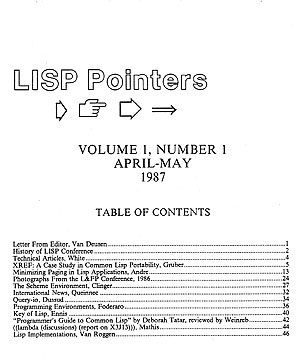
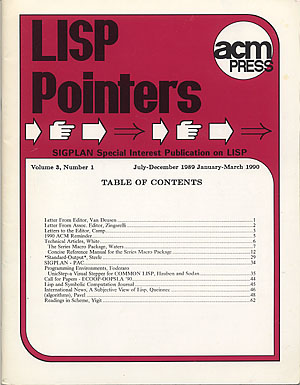
|
Watch a Music Video of the Jun 1989 X3J13 San Jose Meeting
LISP:
It's often joked that Lisp isn't a computer language. Rather, it's a religion. At least that's how
I knew about Lisp from my husband Paul, a passionate advocate for the language. I never expected to join
the congregation but somehow found myself at IBM Research working in the Lisp/VM group. Looking
from the inside out, I have to say that Paul showed exceptionally good taste. But even more than
the language, what I truly loved were the members of that small, but remarkable, group.
Mark Wegman, Martin Mikelsons, and Cyril Alberga. What absolutely incredible people. That's really the
nicest thing about putting up memories on the web - remembering good people.
Having moved away from Ada professionally, it seemed inevitable that I'd become more involved with
the Lisp community. Since I'd already started one publication - Ada LETTERS - it seemed time to start
another. At the 1986 Lisp conference in Boston, I spoke with Lisp implementors and designers, and agreed
to edit a Lisp newsletter, Lisp Pointers, with
a team of departments that would, like Ada LETTERS, begin by soliciting
contributions from companies. Our first issue came out in April of 1987. In 1989 we brought the magazine
under the sponsorship of ACM's SIGPLAN group as SIGPLAN's first publication without an associated
technical committee.
I also have Lisp to thank for convincing me to get onto an airplane for, hopefully, the last time.
As Secretary of the Common Lisp group, I really HAD to get to the Kauai meeting. That meant taking
the train to California, and flying from there to Hawaii. Terrifying, but wonderful. Deep thanks, Lisp.
You've given me the most amazing memories.
Vol I No 1, 1987
Lisp/VM Plaque
Lisp/VM User's Guide

|
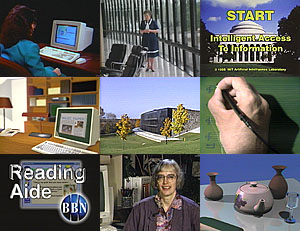
|
VIDEOS ABOUT COMPUTERS:
Having developed a love of video editing in my personal life, I was able to
convince Abe Peled, an IBM Research Vice-President, to let me out of computer languages
and into something more fun. That turned out to be an international, multimedia magazine
that I developed to show off the people and projects around our various research labs.
My husband followed me, and built a half million dollar studio around my project. You can't
even imagine how much fun I had in those years.
When I came out of IBM Research on early retirement, I continued making videos about computer
topics from home, so we had the fun of building up a production and editing suite for ourselves. And
when Paul decided he wanted to travel the states in a 37' long RV, his bribe to me was to create
a digital editing suite to travel with us. Doesn't everyone travel with a large light kit under
their bed? Now that we're finally finishing up the library at the end of the addition, Paul is
upgrading me again to a new editing setup. Can't wait to see how it works out. Fingers crossed.
Well, toes really. It's too hard to edit with your fingers crossed.
|
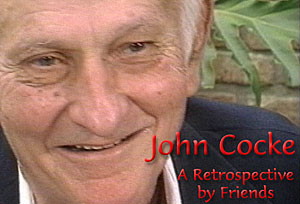
|
John Cocke:
John Cocke was the dearest man, as well as one of the shining lights of IBM Research. With his
health deteriorating, everyone was anxious to let John know how much they cared, as well as tell
people about John and his work on Stretch, ACS, and the RISC architecture. Our job was to
create a multimedia kiosk that would sit in the lobby, and a video that would be shown at
the banquet in John's honor. A year or so later, I upgraded the video to include Bush presenting
John with the Medal of Technology. And I was later asked to make a version for the
Computer History Museum.
You've probably already noticed that there's a lot of variety within my site. Some of that is
normal for a website of many thousands of pages constructed over 16 years. But part of it is quite
purposeful. Experimentation is always the name of my game. I wanted to see if I could build a
static version of
the original video
that would keep much of the beauty of the original. You'll have to decide if I succeeded.
|
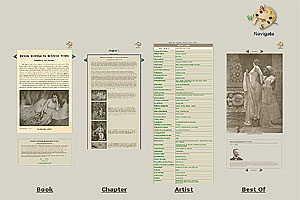
|
CONVERTING BOOKS TO WEBPAGES:
I have the space, the bandwidth and the patience, so I've been putting up some of my favorite books. Mostly they were experiments in simple navigation. An
1802 book
on how to use the
electricity you've captured with your lightning rod to cure gout, and everything else.
An agented book that I wrote on Henry Livingston
as the author of "Night Before Christmas."
But then I decided to put up a book that had been a childhood favorite. Turn of the
20th century academic nudes! Bless mother. Art books usually don't have the
pictures and descriptions on the same page, which means using lots of fingers as bookmarks.
It seemed I might be able to do better.
Paging through the book online had little advantage over
holding the book in your hand.
The chapter by chapter
version was much better. Since the pictures are right alongside their descriptions, no fingers are needed.
I also added a third view that sorted the text
of the book alphabetically by artist. For this
particular book, that technique worked. And if you didn't have much time, I modified the artist
view to a pictures view of my favorites.
|

|
A MUSEUM MULTIMEDIA EXHIBIT:
As part of a Christmas celebration at Locust Grove, a museum for Samuel Finley Breese Morse on
the property that once belonged to his wife's grandfather, Henry Livingston, my husband, Paul Kosinski,
and I created a kiosk display of the life of Henry Livingston. For the museum, we were able to show
the entirety of documents mainly belonging to Henry descendant Steve Thomas.
The attract screen was a thing of pure beauty.
The Henry Livingston website,
which is part of my site, is a cut back version of that kiosk.
|

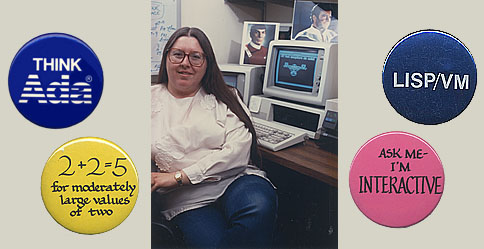














![]() Copyright © 2009, Mary S. Van Deusen
Copyright © 2009, Mary S. Van Deusen